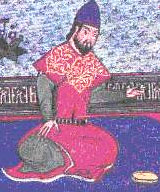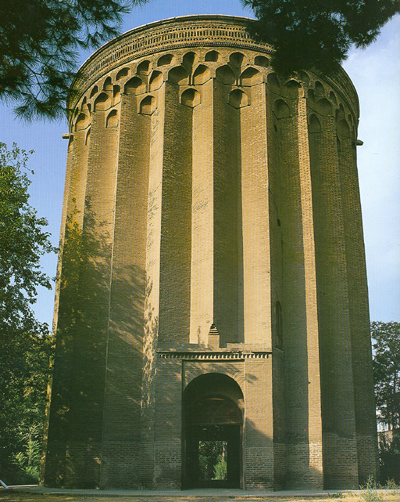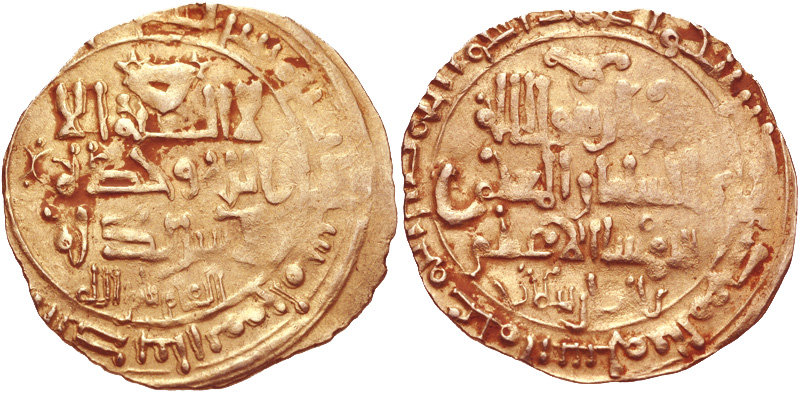|
Qavurt
Kara Arslan Ahmad Qavurt (died 1073), better simply known as Qavurt (also spelled Kavurt) was a Seljuq prince. Upon his brother's death, he led an unsuccessful rebellion against his nephew in an attempt to gain the Seljuk throne. Background The Seljuq dynasty was a Turkish Sunni Muslim dynasty that established both the Seljuq Empire and Sultanate of Rum, which at their total height stretched from Anatolia through Persia. Qavurt was the son of Çağrı Bey, who was the grandson of Seljuk, the founder of the dynasty. Qavurt's brother Alp Arslan succeeded his uncle Tuğrul as the new sultan and Qavurt then the governor of Kirman (south Persia) waited for his turn. Alp Arslan's will Alp Arslan died in 1072. But before death he willed his throne to Malik Shah I, his second son. He also expressed his concern about possible throne struggles. The main contestants for the throne were his eldest son Ayaz and his brother Qavurt. As a compromise, he willed generous grants to Ayaz an ... [...More Info...] [...Related Items...] OR: [Wikipedia] [Google] [Baidu] |
Malik Shah I
Jalāl al-Dawla Mu'izz al-Dunyā Wa'l-Din Abu'l-Fatḥ ibn Alp Arslān (8 August 1055 – 19 November 1092, full name: fa, ), better known by his regnal name of Malik-Shah I ( fa, ), was the third sultan of the Great Seljuk Empire from 1072 to 1092, under whom the sultanate reached its zenith of power and influence. During his youth, he spent his time participating in the campaigns of his father Alp Arslan, along with the latters vizier Nizam al-Mulk. During one of such campaigns in 1072, Alp Arslan was fatally wounded and died only a few days later. After that, Malik-Shah was crowned as the new sultan of the empire, but the succession was contested by his uncle Qavurt. Although Malik-Shah was the nominal head of the Seljuk state, Nizam al-Mulk held near absolute power during his reign. Malik-Shah spent the rest of his reign waging war against the Karakhanids on the eastern side, and establishing order in the Caucasus. Malik-Shah's death to this day remains under dispute; acco ... [...More Info...] [...Related Items...] OR: [Wikipedia] [Google] [Baidu] |
Seljuq Dynasty
The Seljuk dynasty, or Seljukids ( ; fa, سلجوقیان ''Saljuqian'', alternatively spelled as Seljuqs or Saljuqs), also known as Seljuk Turks, Seljuk Turkomans "The defeat in August 1071 of the Byzantine emperor Romanos Diogenes by the Turkomans at the battle of Malazgirt (Manzikert) is taken as a turning point in the history of Anatolia and the Byzantine Empire. or the Saljuqids, was an Oghuz Turkic, Sunni Muslim dynasty that gradually became Persianate and contributed to the Turco-Persian tradition in the medieval Middle East and Central Asia. The Seljuks established the Seljuk Empire (1037-1194), the Sultanate of Kermân (1041-1186) and the Sultanate of Rum (1074-1308), which at their heights stretched from Iran to Anatolia, and were the prime targets of the First Crusade. Early history The Seljuks originated from the Kinik branch of the Oghuz Turks, who in the 8th century lived on the periphery of the Muslim world, north of the Caspian Sea and Aral Sea in their Og ... [...More Info...] [...Related Items...] OR: [Wikipedia] [Google] [Baidu] |
Seljuk Dynasty
The Seljuk dynasty, or Seljukids ( ; fa, سلجوقیان ''Saljuqian'', alternatively spelled as Seljuqs or Saljuqs), also known as Seljuk Turks, Seljuk Turkomans "The defeat in August 1071 of the Byzantine emperor Romanos Diogenes by the Turkomans at the battle of Malazgirt (Manzikert) is taken as a turning point in the history of Anatolia and the Byzantine Empire. or the Saljuqids, was an Oghuz Turkic, Sunni Muslim dynasty that gradually became Persianate and contributed to the Turco-Persian tradition in the medieval Middle East and Central Asia. The Seljuks established the Seljuk Empire (1037-1194), the Sultanate of Kermân (1041-1186) and the Sultanate of Rum (1074-1308), which at their heights stretched from Iran to Anatolia, and were the prime targets of the First Crusade. Early history The Seljuks originated from the Kinik branch of the Oghuz Turks, who in the 8th century lived on the periphery of the Muslim world, north of the Caspian Sea and Aral Sea in their Og ... [...More Info...] [...Related Items...] OR: [Wikipedia] [Google] [Baidu] |
Alp Arslan
Alp Arslan was the second Sultan of the Seljuk Empire and great-grandson of Seljuk, the eponymous founder of the dynasty. He greatly expanded the Seljuk territory and consolidated his power, defeating rivals to the south and northwest, and his victory over the Byzantines at the Battle of Manzikert, in 1071, ushered in the Turkoman settlement of Anatolia. "But the Battle of Manzikert opened Asia Minor to Turkmen conquest" For his military prowess and fighting skills, he obtained the name ''Alp Arslan'', which means "Heroic Lion" in Turkish. Early life Alp Arslan was the son of Chaghri and nephew of Tughril, the founding Sultans of the Seljuk Empire. His grandfather was Mikail, who in turn was the son of the warlord Seljuk. He was the father of numerous children, including Malik-Shah I and Tutush I. It is unclear who the mother or mothers of his children were. He was known to have been married at least twice. His wives included the widow of his uncle Tughril, a Kara-Khanid pr ... [...More Info...] [...Related Items...] OR: [Wikipedia] [Google] [Baidu] |
Coin Of Ahmad Qavurt, Minted In Jiroft
A coin is a small, flat (usually depending on the country or value), round piece of metal or plastic used primarily as a medium of exchange or legal tender. They are standardized in weight, and produced in large quantities at a mint in order to facilitate trade. They are most often issued by a government. Coins often have images, numerals, or text on them. ''Obverse'' and its opposite, ''reverse'', refer to the two flat faces of coins and medals. In this usage, ''obverse'' means the front face of the object and ''reverse'' means the back face. The obverse of a coin is commonly called ''heads'', because it often depicts the head of a prominent person, and the reverse ''tails''. Coins are usually made of metal or an alloy, or sometimes of man-made materials. They are usually disc shaped. Coins, made of valuable metal, are stored in large quantities as bullion coins. Other coins are used as money in everyday transactions, circulating alongside banknotes. Usually the highest value ... [...More Info...] [...Related Items...] OR: [Wikipedia] [Google] [Baidu] |
Year Of Birth Unknown
A year or annus is the orbital period of a planetary body, for example, the Earth, moving in its orbit around the Sun. Due to the Earth's axial tilt, the course of a year sees the passing of the seasons, marked by change in weather, the hours of daylight, and, consequently, vegetation and soil fertility. In temperate and subpolar regions around the planet, four seasons are generally recognized: spring, summer, autumn and winter. In tropical and subtropical regions, several geographical sectors do not present defined seasons; but in the seasonal tropics, the annual wet and dry seasons are recognized and tracked. A calendar year is an approximation of the number of days of the Earth's orbital period, as counted in a given calendar. The Gregorian calendar, or modern calendar, presents its calendar year to be either a common year of 365 days or a leap year of 366 days, as do the Julian calendars. For the Gregorian calendar, the average length of the calendar year ( ... [...More Info...] [...Related Items...] OR: [Wikipedia] [Google] [Baidu] |
Turkic Rulers
Turkic may refer to: * anything related to the country of Turkey * Turkic languages, a language family of at least thirty-five documented languages ** Turkic alphabets (other) ** Turkish language, the most widely spoken Turkic language * Turkic peoples, a collection of ethno-linguistic groups ** Turkic migration, the expansion of the Turkic tribes and Turkic languages, mainly between the 6th and 11th centuries ** Turkic mythology ** Turkic nationalism (other) ** Turkic tribal confederations See also * * Turk (other) * Turki (other) * Turkish (other) * Turkiye (other) * Turkey (other) Turkey is a country in Asia and Europe. Turkey may also refer to: Birds * Turkey (bird), the genus ''Meleagris'', including several species of large birds native to North America and Central America **Ocellated turkey, native to the Yucatán ** ... * List of Turkic dynasties and countries {{disambiguation Language and nationality ... [...More Info...] [...Related Items...] OR: [Wikipedia] [Google] [Baidu] |
1073 Deaths
1 (one, unit, unity) is a number representing a single or the only entity. 1 is also a numerical digit and represents a single unit of counting or measurement. For example, a line segment of ''unit length'' is a line segment of length 1. In conventions of sign where zero is considered neither positive nor negative, 1 is the first and smallest positive integer. It is also sometimes considered the first of the infinite sequence of natural numbers, followed by 2, although by other definitions 1 is the second natural number, following 0. The fundamental mathematical property of 1 is to be a multiplicative identity, meaning that any number multiplied by 1 equals the same number. Most if not all properties of 1 can be deduced from this. In advanced mathematics, a multiplicative identity is often denoted 1, even if it is not a number. 1 is by convention not considered a prime number; this was not universally accepted until the mid-20th century. Additionally, 1 is the s ... [...More Info...] [...Related Items...] OR: [Wikipedia] [Google] [Baidu] |
Great Seljuk Empire
The Great Seljuk Empire, or the Seljuk Empire was a high medieval, culturally Turko-Persian, Sunni Muslim empire, founded and ruled by the Qïnïq branch of Oghuz Turks. It spanned a total area of from Anatolia and the Levant in the west to the Hindu Kush in the east, and from Central Asia in the north to the Persian Gulf in the south. The Seljuk Empire was founded in 1037 by Tughril (990–1063) and his brother Chaghri (989–1060), both of whom co-ruled over its territories; there are indications that the Seljuk leadership otherwise functioned as a triumvirate and thus included Musa Yabghu, the uncle of the aforementioned two. From their homelands near the Aral Sea, the Seljuks advanced first into Khorasan and into the Iranian mainland, where they would become largely based as a Persianate society. They then moved west to conquer Baghdad, filling up the power vacuum that had been caused by struggles between the Arab Abbasid Caliphate and the Iranian Buyid Empire. The subs ... [...More Info...] [...Related Items...] OR: [Wikipedia] [Google] [Baidu] |
Hamedan
Hamadan () or Hamedan ( fa, همدان, ''Hamedān'') (Old Persian: Haŋgmetana, Ecbatana) is the capital city of Hamadan Province of Iran. At the 2019 census, its population was 783,300 in 230,775 families. The majority of people living in Hamadan identify as ethnic Persians. Hamedan is believed to be among the oldest Iranian cities. It is possible that it was occupied by the Assyrians in 1100 BCE; the Ancient Greek historian, Herodotus, states that it was the capital of the Medes, around 700 BCE. Hamedan has a green mountainous area in the foothills of the 3,574-meter Alvand Mountain, in the midwest part of Iran. The city is 1,850 meters above sea level. The highly cultural nature of this old city and its historic sites attract tourists during the summer to this city, located approximately southwest of Tehran. The major sights of this city are the Ganj Nameh inscription, the Avicenna monument and the Baba Taher monument. The main language in the city is Persian. History A ... [...More Info...] [...Related Items...] OR: [Wikipedia] [Google] [Baidu] |
Artukids
The Artuqid dynasty (alternatively Artukid, Ortoqid, or Ortokid; , pl. ; ; ) was a Turkoman dynasty originated from tribe that ruled in eastern Anatolia, Northern Syria and Northern Iraq in the eleventh through thirteenth centuries. The Artuqid dynasty took its name from its founder, Artuk Bey, who was of the Döger branch of the Oghuz Turks and ruled one of the Turkmen beyliks of the Seljuk Empire. Artuk's sons and descendants ruled the three branches in the region: Sökmen's descendants ruled the region around Hasankeyf between 1102 and 1231; Ilghazi's branch ruled from Mardin and Mayyafariqin between 1106 and 1186 (until 1409 as vassals) and Aleppo from 1117–1128; and the Harput line starting in 1112 under the Sökmen branch, and was independent between 1185 and 1233. History The dynasty was founded by Artuk, son of Eksük, a general originally under Malik-Shah I and then under the Seljuk emir of Damascus, Tutush I. Tutush appointed Artuk governor of Jerusalem in ... [...More Info...] [...Related Items...] OR: [Wikipedia] [Google] [Baidu] |
Oghuz Turk
The Oghuz or Ghuzz Turks ( Middle Turkic: ٱغُز, ''Oγuz'', ota, اوغوز, Oġuz) were a western Turkic people that spoke the Oghuz branch of the Turkic language family. In the 8th century, they formed a tribal confederation conventionally named the Oghuz Yabgu State in Central Asia. The name ''Oghuz'' is a Common Turkic word for "tribe". Byzantine sources call the Oghuz the Uzes (Οὐ̑ζοι, ''Ouzoi''). By the 10th century, Islamic sources were calling them Muslim Turkmens, as opposed to Tengrist or Buddhist. By the 12th century, this term had passed into Byzantine usage and the Oghuzes were overwhelmingly Muslim. The term "Oghuz" was gradually supplanted among the Turks themselves by the terms ''Turkmen'' and '' Turcoman'', ( ota, تركمن, Türkmen or ''Türkmân'') from the mid-10th century on, a process which was completed by the beginning of the 13th century. The Oghuz confederation migrated westward from the Jeti-su area after a conflict with the Karluk ... [...More Info...] [...Related Items...] OR: [Wikipedia] [Google] [Baidu] |










